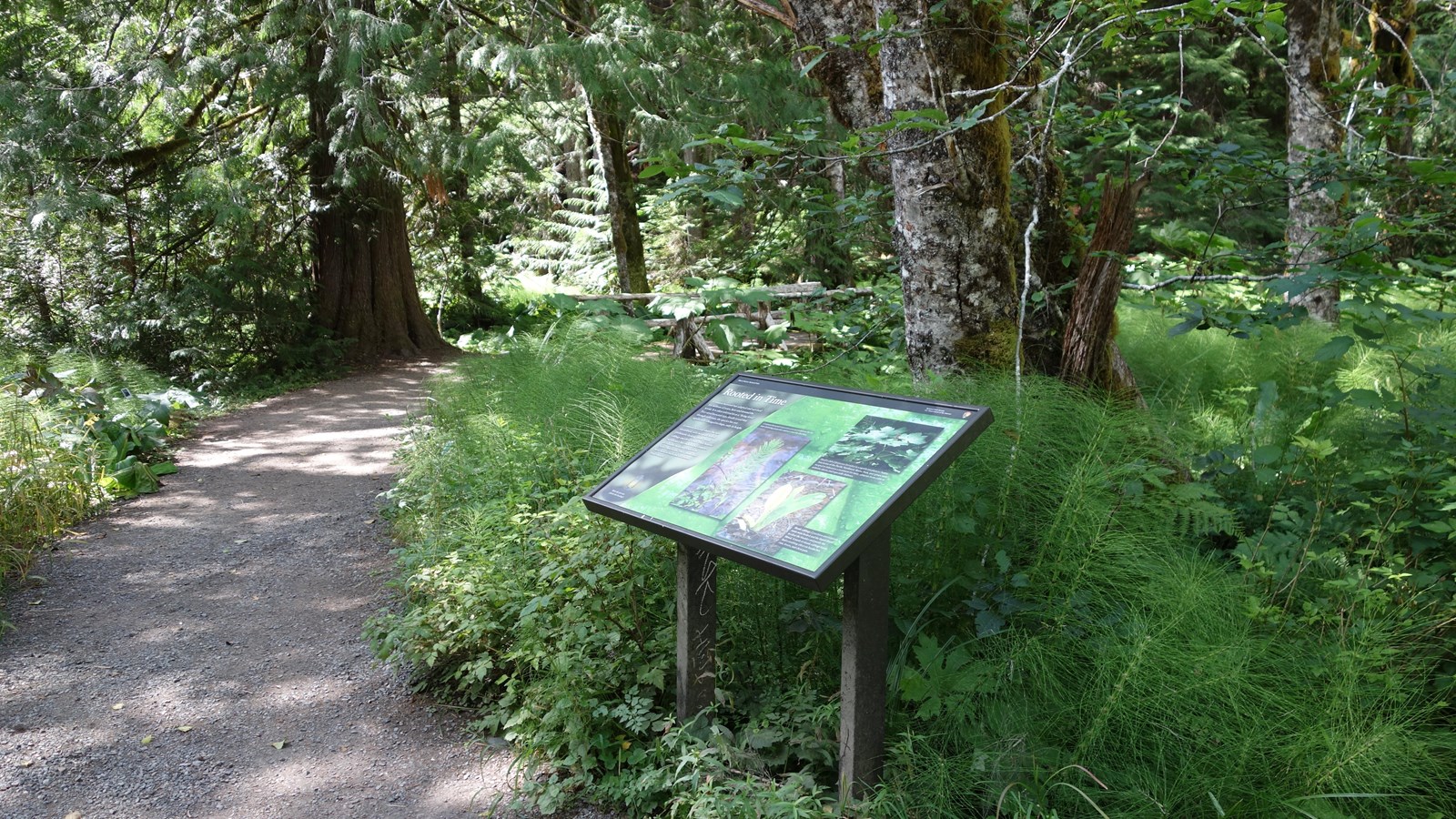Last updated: October 13, 2022
Place
Trail of the Shadows: Rooted in Time Exhibit Panel

NPS Photo
Historical/Interpretive Information/Exhibits
Title: Rooted in Time
Main Text
Common horsetail has adapted and survived for millions of years, here and around the world. It is often referred to as a “living fossil”. Tree-sized horsetail-type fossils reveal that through millennia, the species has not significantly changed in shape, only in height.
Common horsetail shares the wet streambank with two giant-leafed, prehistoric-looking plants, skunk cabbage and devil’s club. Their historic significance has endured for centuries as valuable medicinal sources for Native American’s. These plants also were used as tools and occasional food sources.
Secondary Text
Common horsetail (Equisetum arvense) is known for its hair-cleaning properties and as a cure for diarrhea.
Devil’s club (Oplopanx horridus) is a significant plant to Native Americans of the Pacific Northwest. Roots, back, and spines were steeped or infused as a treatment for many ailments from colds to arthritis, ulcers, and especially diabetes.
Skunk cabbage (Lysichiton Americanum) roots were boiled and the liquid drunk to clear the bladder and purify the blood. A mash of skunk cabbage leaves had a soothing effect on headaches, cuts, fevers, and chest pain.
How do you use plants for healing?
Exhibit Panel Description
A blurry, mottled background fills the left third of the panel. The main text is in a column on the left over the blurry background. Below the main text in the lower left corner of the panel is the last section of secondary set into a small grey oval. Above the text is a small graphic of a historic gas lantern lit with a soft yellow light. A detail of a skunk cabbage leaf fills the right two-thirds of the exhibit panel. The leaf is shiny, bright green, and covered in water droplets. Using the skunk cabbage leaf as a background, are three smaller photos, each with a caption of associated secondary text. In the middle of the panel is a photo of a common horsetail, a plant with a single tall stem covered in rings of thread-like leaves like a pipe-cleaner brush. In the upper right corner is a photo of devil’s club, which has tall, woody stems supporting several large palmate, lobed leaves and a spike of red berries. Both stems and leaves are covered in thorns. In the lower right corner is a photo of a young skunk cabbage growing out of a shallow pool of water. Large, green leaves uncurl next to a spike of flowers protected by a yellow, hood-like bract.
Visit This Exhibit Panel
This exhibit panel is located in Longmire along the Trail of the Shadows, a short trail that starts across the street from the National Park Inn. Longmire is open year-round.
